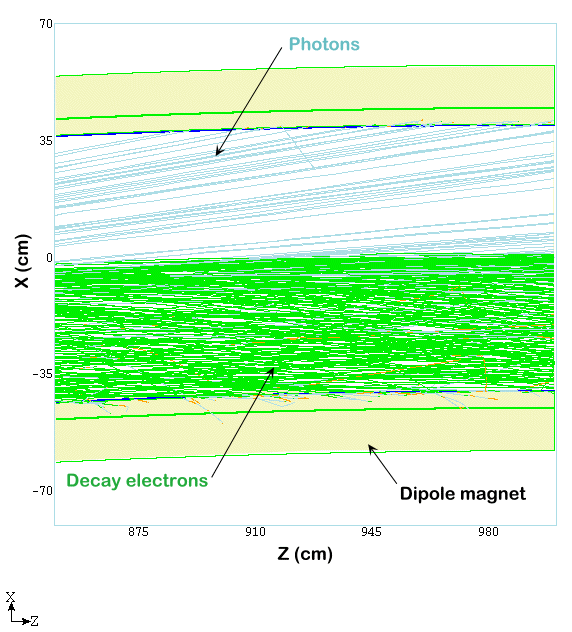Figure 3

Close up near the end of the second dipole showing decay electron tracks, synchrotron radiation photons and low energy showers from particles hitting the inner vacuum beam pipe edge
Here we show a close up of section near the end of the dipole magnet. In this region there are many tracks which are being bent back toward the magnet center due to the B-field reversal which happens as the particles pass beyond the superconducting coils. Only low energy decay electrons, which are given very large deflections in the 5 Tesla central field region, can make it to the outside wall. The low energy electrons make it through the reversed field region by having large inclinations so that there is not enough time to turn them around before they hit the inner vacuum beam pipe; however, the showers from these low energy electrons are well contained in the warm iron yoke. Thus there is very little backscatter energy deposition which makes it back to the superconducting coils.
In order to see the spots where decay electrons hit the top or bottom walls of the vacuum beampipe, this same region is shown again in Figure 5 but with the decay electrons eliminated. The vacuum beam pipe cross section is shown both in Figure 4 and again in Figure 9.


